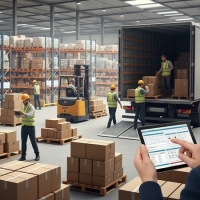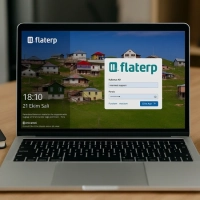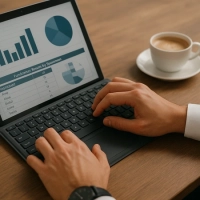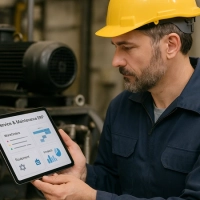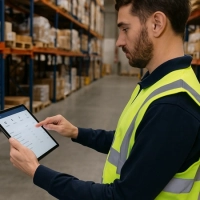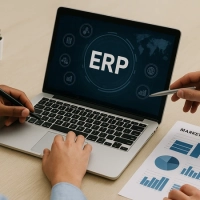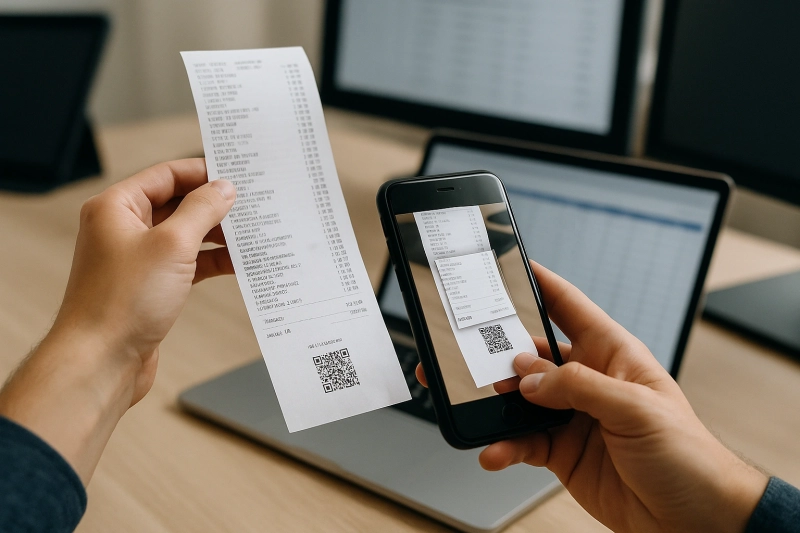
- 1. Why Are E-Document Applications So Important?
- 2. What are E-Invoice, E-Archive and E-Delivery Note?
- 3. Current Legal Obligations in Türkiye (2025)
- 4. How Does E-Document Integration Work with FlatERP?
- 5. E-Document Setup Steps with FlatERP
- 6. Advantages of FlatERP Integration for Businesses
- 7. Conclusion: Capture the Power of Digitalization with FlatERP
With the acceleration of digital transformation in Turkey and the Revenue Administration's (GİB) expansion of e-document applications, e-invoice, e-archive and e-delivery note are no longer just a choice for businesses but a legal obligation.
While paper-based invoice and delivery note processes cause both loss of time and increased costs, businesses can significantly increase their operational efficiency thanks to digital integration.
FlatERP, with its Revenue Administration-approved infrastructure and user-friendly interface, is at the heart of this transformation. In this article, we'll take a step-by-step look at how FlatERP's e-invoice, e-archive, and e-delivery note integration can help you manage your business's accounting and logistics processes faster, more accurately, and more cost-effectively.
1. Why Are E-Document Applications So Important?
E-invoicing, which began in Turkey in 2010, has expanded over time with e-archives and e-delivery notes. New regulations, particularly in 2023 and 2024, have made e-documentation mandatory for many businesses with a turnover exceeding 3 million Turkish Lira .
E-document integration brings the following advantages to businesses:
- Time saving: Manual invoice and delivery note preparation processes are eliminated.
- Cost reduction: Paper, shipping and archiving costs are significantly reduced.
- Error reduction: With digital data transfer, the risk of entering incorrect amounts or information is minimized.
- Environmentally friendly solution: Reducing paper consumption contributes to sustainability goals.
2. What are E-Invoice, E-Archive and E-Delivery Note?
E-Invoice
E-invoice is a system that enables invoices to be prepared and stored electronically and delivered to the recipient digitally .
- It is sent through GIB systems.
- It completely digitizes invoice processes among taxpayers.
E-Archive
E-archive enables the preparation of invoices electronically for end consumers who are not e-invoice users or non-taxpayers .
- It is especially critical for e-commerce companies.
- No paper printout required; can be stored in PDF or UBL format.
E-Delivery Note
E-delivery note is the digitalized version of the delivery note issued during the transportation and delivery of goods .
- Shipment information is transmitted electronically to the Revenue Administration.
- It is possible to monitor goods movements in real time.
3. Current Legal Obligations in Türkiye (2025)
The Revenue Administration (GİB) is accelerating the transition to e-documents by updating its turnover limits and scope of application annually. By 2025:
- E-Invoice: Mandatory for taxpayers whose annual gross sales revenue is 3 million TL or more.
- E-Archive: Whether or not they are e-invoice taxpayers, it is mandatory for all companies selling online to issue e-archive invoices.
- E-Delivery Note: Mandatory in certain sectors such as production, logistics and wholesale food, regardless of turnover.
These regulations make digital integration a necessity for businesses of all sizes.
4. How Does E-Document Integration Work with FlatERP?
FlatERP is a cloud-based ERP solution that integrates with GIB-approved integrator companies . It allows you to manage e-invoice, e-archive, and e-delivery note transactions from a single panel.
- Single Panel Management: Users can initiate, edit and monitor all e-document processes from a single screen.
- Automatic Data Flow: Orders created in the sales module can be instantly converted into e-invoices; delivery note information is automatically matched.
- Compliance with Current Legislation: FlatERP constantly monitors the legislative changes made by the Revenue Administration and automatically updates the system.
- Accounting Integration: All e-invoices and e-delivery notes are instantly recorded in accounting records.
5. E-Document Setup Steps with FlatERP
FlatERP's powerful integration structure simplifies the installation process . Here's a step-by-step installation guide:
- Activating the E-Document License
E-invoice, e-archive and e-delivery note modules are activated via FlatERP. - Providing Financial Seal or e-Signature
A financial seal or e-signature approved by the Revenue Administration is obtained. - Revenue Administration Application and Activation
Applications are made through the GIB e-document portal and company information is verified. - Revenue Administration Connection with FlatERP
The system initiates the data flow by establishing the GIB API connection. - Testing and First Delivery
System verification is done by sending a test invoice/delivery note. - Department and User Authorization
User roles are defined for sales, accounting and logistics departments.
At the end of this process, the company can perform all e-document transactions with a single click and without errors .
6. Advantages of FlatERP Integration for Businesses
Speed and Convenience
It completes invoice and delivery note processes in seconds by putting an end to manual data entry.
Cost Advantage
It eliminates paper, toner, shipping and physical archiving costs.
For the average SME, it can provide operational savings of up to 30% per year.
Legal Compliance and Staying Current
Every new regulation of the Revenue Administration is automatically reflected in the FlatERP system; no additional development is required.
Error Prevention and Data Security
Automatic matching of order–invoice data eliminates the risk of incorrectly issued invoices or missing delivery notes.
FlatERP's cloud infrastructure provides data security in accordance with KVKK and ISO 27001 standards .
7. Conclusion: Capture the Power of Digitalization with FlatERP
Digitalization and tax regulations in Turkey are evolving every year. Adapting to this change is a critical step for any business looking to streamline business processes, reduce costs, and avoid legal risks .
FlatERP simplifies this process with its integration with Revenue Administration-approved e-invoices, e-archives, and e-delivery notes . Manage your entire workflow from sales and accounting to warehousing and logistics from a single screen, enabling you to transition to a paperless and error-free business model.
Request a Free Demo now to take a seamless step into the world of e-documents with FlatERP.











